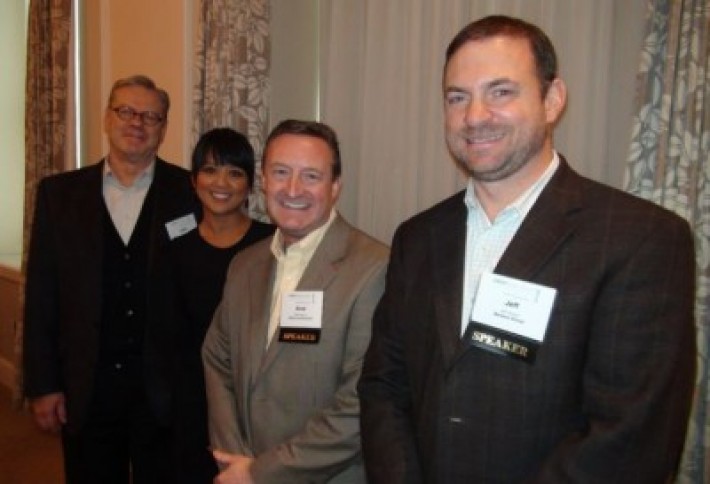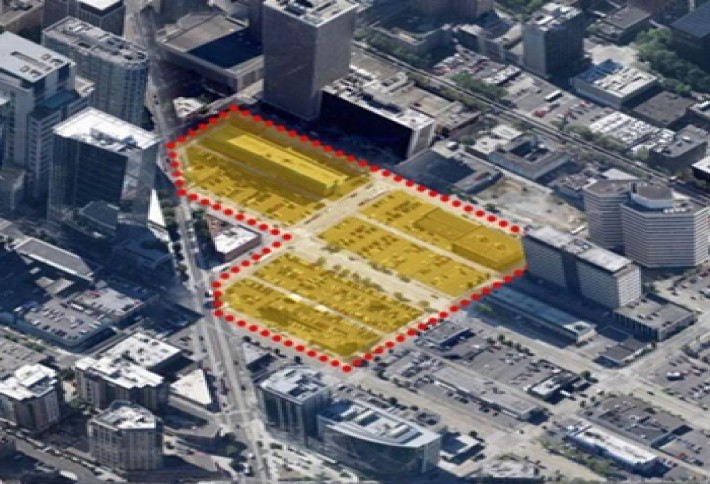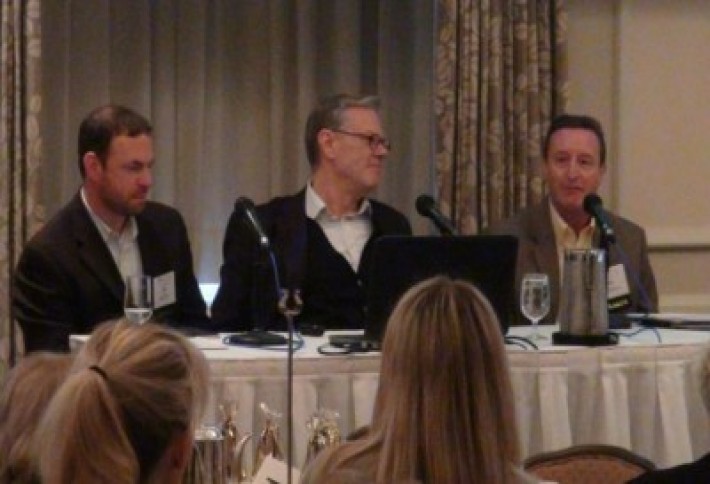Amazon Reveals Campus Plan

When we say The Three Towers, we're not referring to a lost J.R.R. Tolkien sequel. (Meaning you won't have to sit through three more movies.) Details on Amazon's three-building, 3M SF Denny Triangle reveal Amazon is following through on its promise to not make it look like a corporate campus.
We snapped NBBJ principal John Savo, CREW prez Jennifer Reyes,Sellen Construction senior manager Brad Hayes, and Seneca Group's Jeff Giuzio after theyheadlined a CREW luncheon at the Washington Athletic Club late last week. These guys are the 'NSYNC of Seattle CRE--word got out they would be speaking and tickets sold out within 30 minutes. Jennifer said she'd never seen a CREW luncheon so packed. John says the towers will be built one at a time, with excavation beginning on the first block (so-called "Block 14" at 7th and Lenora) in June. Blocks 19 and 20, on the other side of Lenora, will be built out later, as directed by Amazon.)
Amazon has always been vocal that theircorporate campus should look... well, not like a corporate campus, John says: "They are looking for things that would establish it as a neighborhood." In Seattle, that means a separate bike entrance, lockers and showers,and the ability to stick your hand out the window to check for rain even if your office is 150 feet up. (John doesn't know of any other building in the nation that has functioning windows on the 37th story; all floors of the towers will have them.) IA Interior Architects, which is providing interior design and workplace strategy services for Amazon, is working alongside NBBJ to help inform the exterior shape and footprint of the new towers.Each building will have a curtain wall with different "skin types" that shimmer in the sun. (Buildings with skin? Tolkien would definitely approve.)
How do you build a skyscraper office tower for the world's largest online distributor? Very carefully, says Brad. A few numbers on this project:The number of firms NBBJ has working on the towers--3; The number of construction jobs to be created by the project--5,000;Tons of steel needed to complete one building--6,000;The number of employees who will eventually move into the buildings--12,000; and the number of additional jobs ultimately created for each new high tech job in Seattle--5.



